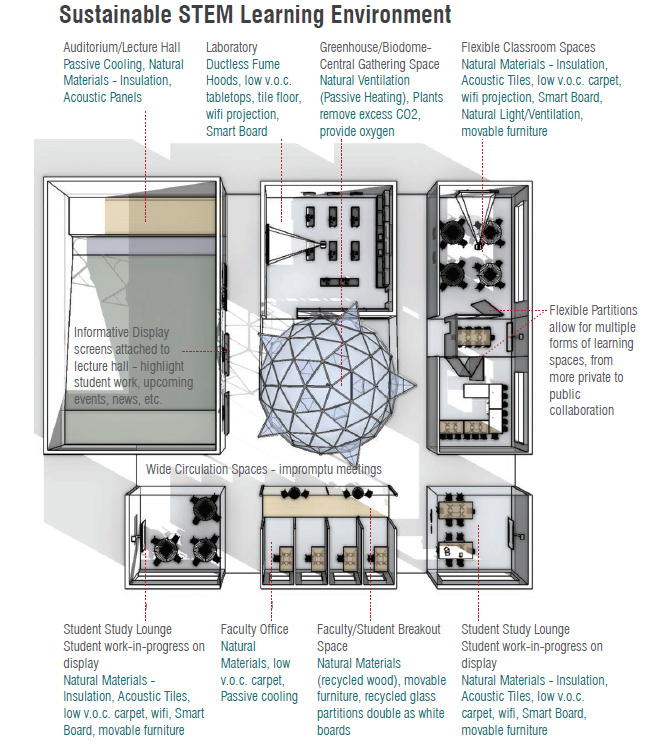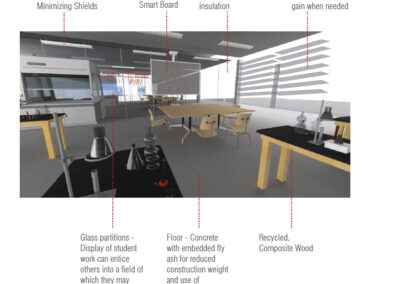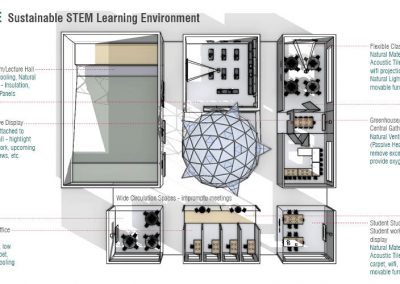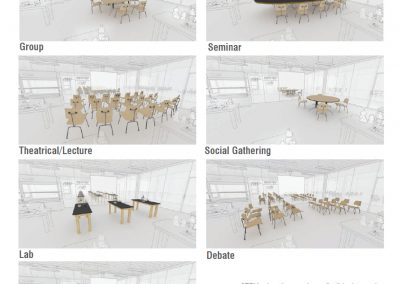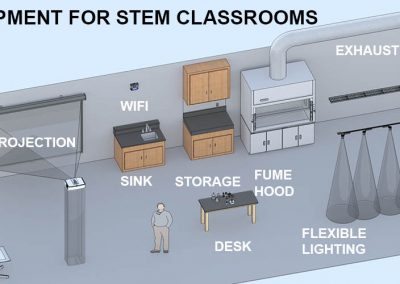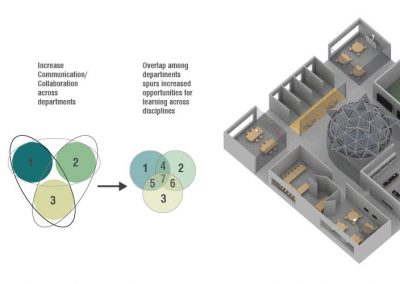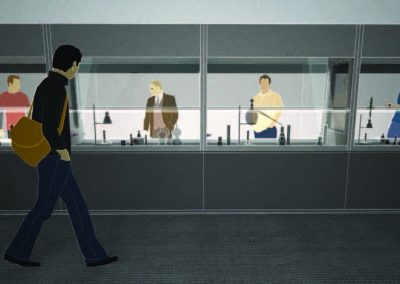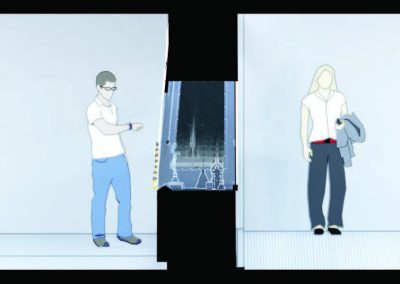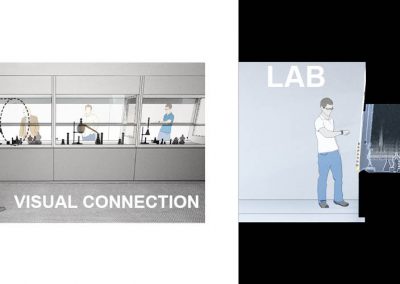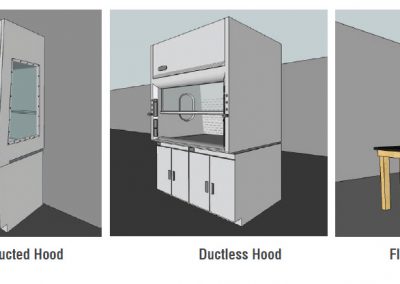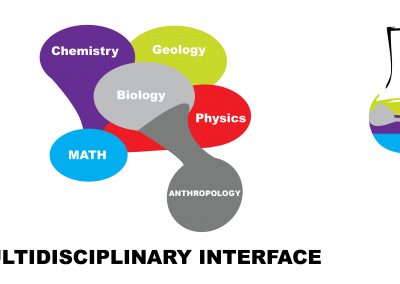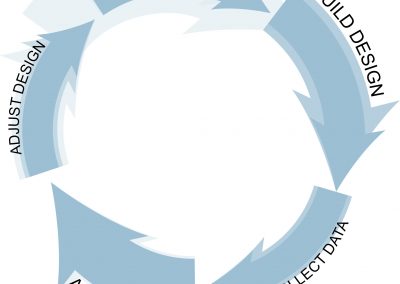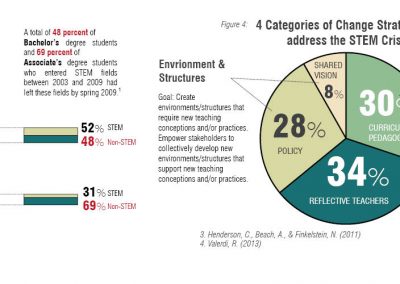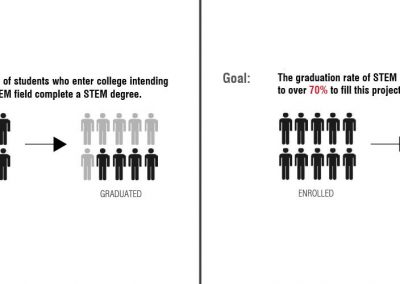The President’s Council of Advisors on Science and Technology (PCAST) projected an economic need for approximately 1 million more STEM professionals than the U.S. will produce at the current rate over the next decade in order for the U.S. to retain its historical preeminence in science and technology. Despite the considerable attention, research, and funding that has been invested in this issue, little progress has been made in increasing student retention in STEM fields. This research attempts to address the issue from a different angle by shifting more of the focus from the teaching methods and curricula to the sustainable built environment and the architectural design of facilities that best support these newly established practices. In order for cross-disciplinary, open and interactive learning associated with STEM to take place, it is necessary for an environment to be designed that best caters to these learning needs. It is with this idea that the built environment can also serve as a pedagogical tool to further engage students in the STEM learning process, especially in regard to addressing today’s critical environmental issues. This research analyzes the architecture of Sustainable STEM Learning Environments, providing a foundation for their progressive design using green technology and sustainable practices in support of STEM learning. This synergy of the architecture of STEM learning in conjunction with sustainable practices forms a symbiotic relationship between the built and natural environment that further enhances the student learning experience and improves performance, increasing student engagement and ultimately retention in STEM fields.

